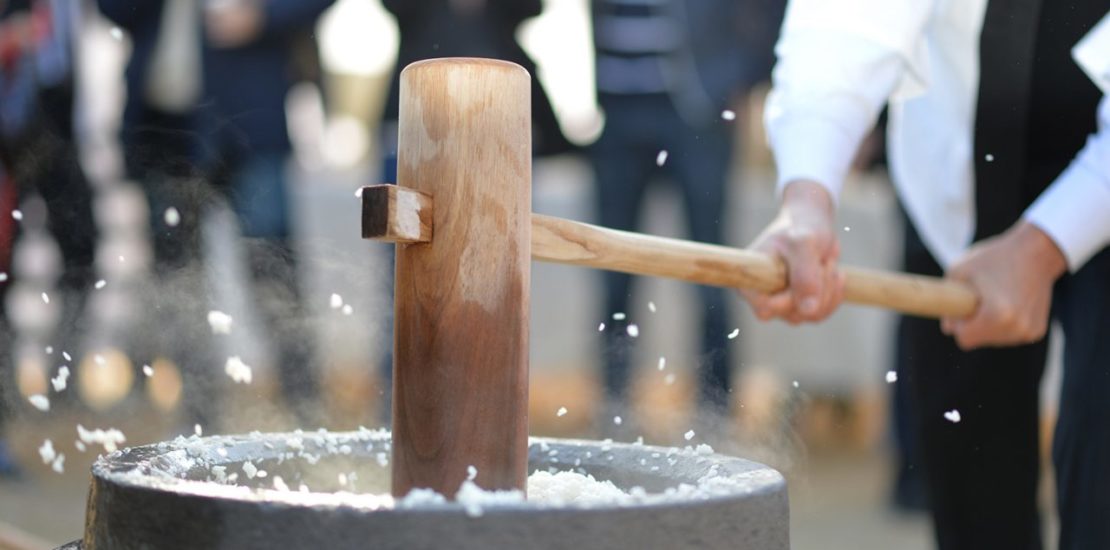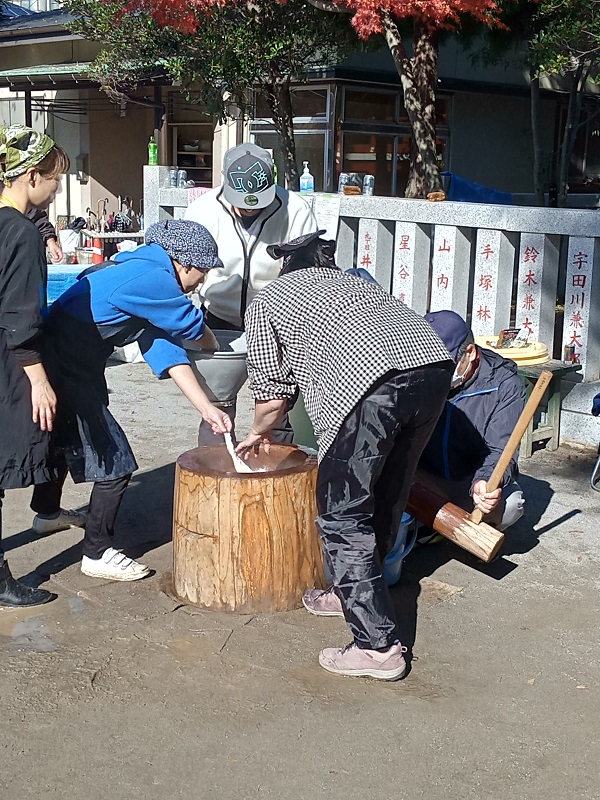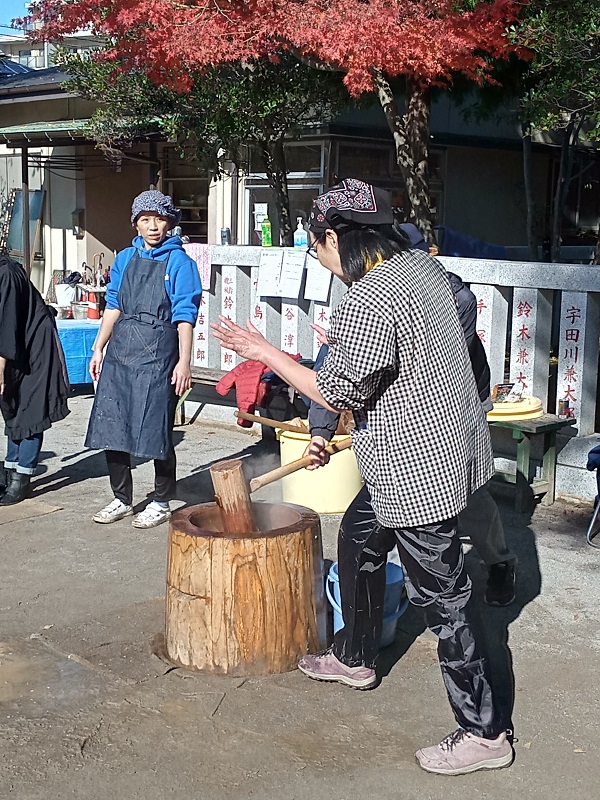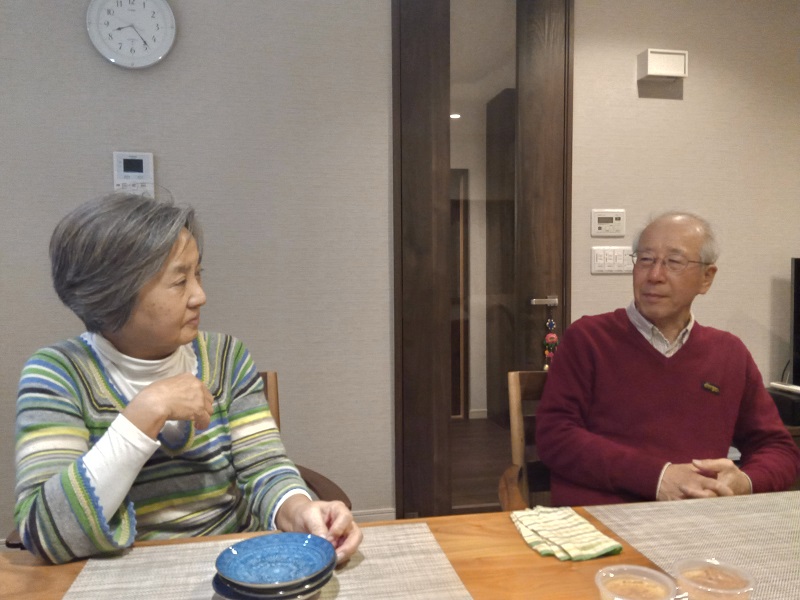
Do you like mochi? Discover everything about it in this article. Its history, how to prepare it, and how this lovely traditional japanese sweet is deeply integrated into Japanese traditional culture and rituals.
In early December, an association of neighborhoods in Tokyo organized a demonstration around mochi, the sticky and elastic rice whose preparation and traditional tasting in family try to survive in Japanese cities.
A winter sunday morning in Tokyo. Near a Shinto temple, many families line up near a strange open kitchen. It doesn’t smell food yet. The noise attracts attention and looks. A dozen people, many of them are teenagers, beat on a kind of sticky white paste dipped in a thick log of wood. One person to hit, one person to put the paste back in place. Sometimes, even two batters cooperate and coordinate for greater efficiency. With smiling and in the joy, the atmosphere is at the party. This is a demonstration of the traditional preparation of mochi

A big wooden hammer and a hollow tree trunk for the preparation
The mochi is a rice, sticky and elastic, traditional, essential element of culinary heritage, Japanese culture, especially during ceremonies and festivals. Japanese people take mochi rice, «mochigome», steam it, then beat it hot in a wooden mortar, a hollow tree trunk called «Usu», using a kind of giant hammer called «Kine». Then, people obtain a white paste transformed into pallets or rectangles. This is mochi! This rice can be found in many soups or pastries. Its texture and taste are unique, as are its preparation and the story of its tasting.
Kayo and Ryo, a retired couple from the neighborhood, present for the demonstration, explain : «When we were children, at the end of December, everywhere in the street, we heard the kine hitting the rice on the wood. We could feel the new year arriving. Normally, the mochi is prepared to be tasted the first three days of the year at breakfast. When we were kids, we could eat 8 mochi per meal and they were bigger than today. But the first part was offered to the gods» recalls the couple.
The mochi has a character first religious. It is considered as the container of the spirit of the gods. «We kept it fifteen days in a place for the gods and then we cleaned it a little and we ate it» remember Kayo and Ryo, nostalgic, before tempering: «It was above all a moment to share with family. The family was flattening the rice together».


Handmade mochi is threatened by the evolution of Japon
Over the decades, the preparation of mochi has deserted the big cities in Japan. For the retired couple, the evolution of society marked this change: «After the war, the economy developed very quickly in Japan. The structure of the family changed. Before, children, parents, grandparents lived in the same house. With the new economy, families became smaller and people, busier. And today, people don’t have land, traditional tools. Moreover, the supermarkets sell finished products. That’s why the mochi has gradually disappeared».
Not everywhere. In the countryside, traditional rice preparation and consumption persist. The city is trying to reconnect with history.

Simple Neighborhood associations or sumo’s stars, Japanese try to preserve mochi
Prominent figures of Japan promote it: «When our son was a child, his school received sumos that demonstrated mochi’s preparation» remember Kayo and Ryo.
Despite the changes, the couple and the Japanese in general remain very attached to the mochi. The popularity of a simple event organized by a neighborhood association is an example of the attachment to this kind of rice. On this sunday of december, in a district of Tokyo, many families surrounded the «drummers». Then, they stood in line to receive and taste the vegetable soup made with vegetables and mochi. A soup called «Zöni». Even the baseball team in the sector, in uniform, came for the event. All in an atmosphere of sharing, a family spirit, essential ingredients of the mochi recipe.

The mochi, dangerously delicious
The mochi is a particularly sticky and elastic food. Every year in Japan, some people die after tasting pieces of mochi, stuck in their throats. Each year, Japanese news channels record the number of fatal accidents. Thus during the passage of 2014 to 2015, 9 people died by eating this product. Each winter, the authorities launch warning campaigns to remind people to take care and to cut small pieces. Children and older people are advised to not eat mochi. In fact, 90% of the victims of accidents are over 65 years old.
A little history
It is estimated that the mochi appeared in Japan towards the end of the Jômon era, about 2,000 years ago, introduced from Southeast Asia at the same time as rice growing. In Heian times, about 1300 years ago, it was an indispensable part of festivals and religious offerings. Then, during the Muromachi period, about 700 years ago, with the development of the tea ceremony, it found its place in the composition of Japanese pastries.
Enjoy your next handmade mochi tasting!
Author: Pierre WestelynckRelated Articles
Warning: Undefined array key "sfsi_threadsIcon_order" in /home/veremosglobal/tokyoroomfinder.com/public_html/blog/wp-content/plugins/ultimate-social-media-icons/libs/controllers/sfsi_frontpopUp.php on line 165
Warning: Undefined array key "sfsi_blueskyIcon_order" in /home/veremosglobal/tokyoroomfinder.com/public_html/blog/wp-content/plugins/ultimate-social-media-icons/libs/controllers/sfsi_frontpopUp.php on line 170
Warning: Undefined array key "sfsi_bluesky_display" in /home/veremosglobal/tokyoroomfinder.com/public_html/blog/wp-content/plugins/ultimate-social-media-icons/libs/controllers/sfsi_frontpopUp.php on line 266



